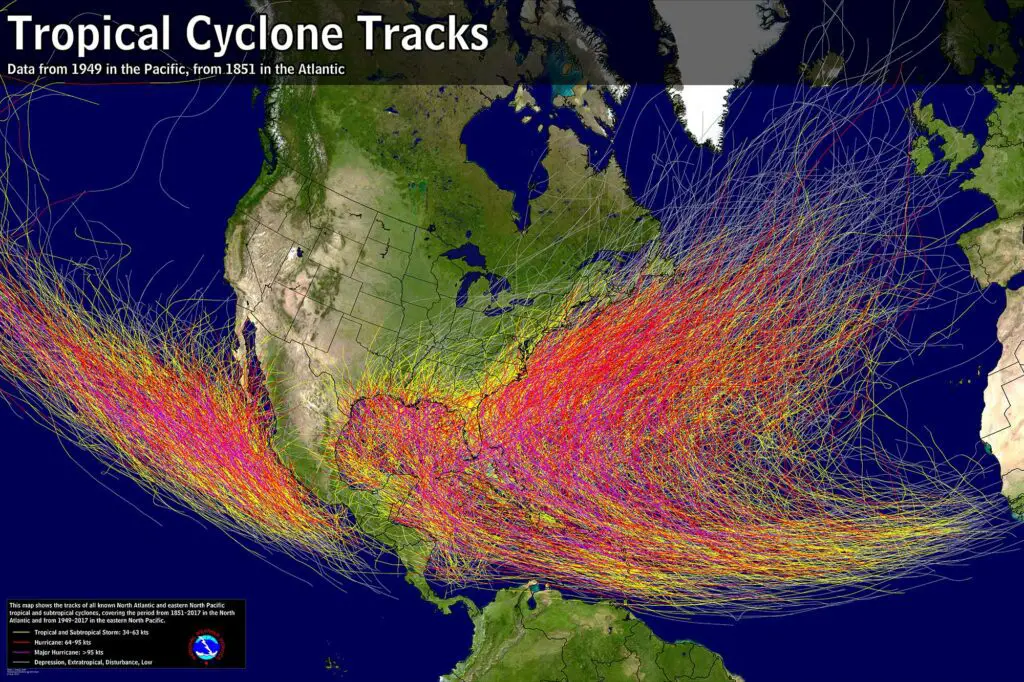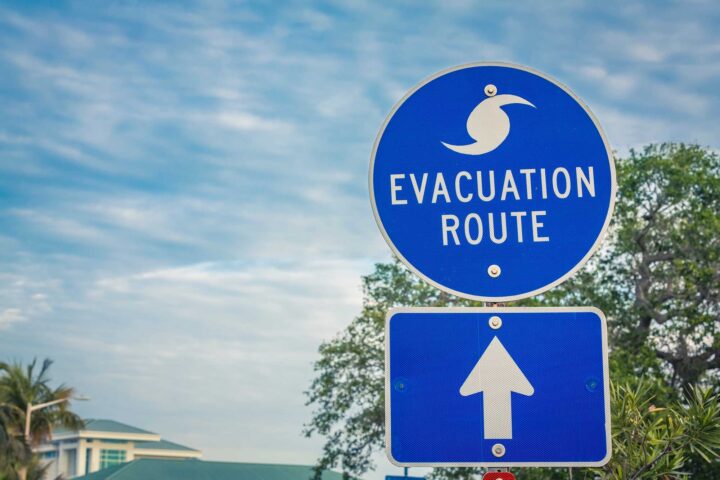The National Hurricane Center says the Atlantic hurricane season officially begins on June 1 and runs through November 30. However, in reality, hurricanes can happen anytime from early May to late December. Several factors, including weather conditions in the tropics, upper-level winds, and sea surface temperatures, come into play. So, when does the hurricane season start? This blog will answer that question.
Indeed, even climate change is playing a factor, changing our concepts of an “average Atlantic hurricane season.” So, when does hurricane season start? We discuss when’s the most likely time to experience a tropical storm or hurricane in some of the U.S.’s most vulnerable locations.
When is hurricane season in Florida?
While Florida occasionally sees tropical storms and hurricanes in May, the risk increases dramatically in early and mid-June along the west coast of Florida. Activity spikes again in late July across the entire state, peaking in August and gradually decreasing in September, from east to west, with most activity over by October.
When does Hurricane Season Start in Texas?
The most active period generally runs from mid-August to mid-September, however.
When is hurricane season in the Caribbean?
Traditionally, the Caribbean hurricane season starts in May or June in the central and western Caribbean. Storms earlier in this period tend to form in the central Caribbean, while storms in June form in the western Caribbean. The eastern Caribbean, including Puerto Rico, typically avoids most tropical activity until July, with activity peaking in mid-August to mid-September.
Activity quiets down first in the eastern Caribbean in early October. However, the central and western Caribbean islands can see tropical activity during the winter months in rare cases!
When does hurricane season start in North Carolina?
Early-season storms in May and June are uncommon and typically originate from the Gulf of Mexico. The risk increases gradually during July, highest during August, and throughout September.
However, due to geography, North Carolina is much more likely to have a landfalling hurricane than South Carolina. Eastern North Carolina and the Outer Banks stick out from the rest of the East Coast, much like Cape Cod does in the Northeastern US.
The opposite is why directly landfalling hurricanes are rare from roughly Charleston, South Carolina, southward to the northeastern Florida coast. Here the coastline does the opposite of what it does in the Outer Banks. Storms typically begin to curve northwestward and northward offshore, which keeps them from making landfall in these areas.
When does Hurricane Season Start in the Northeastern US?
However, occasionally storms develop off the East Coast and ride northward, most often affecting Cape Cod as they move away from the United States. Sometimes weather patterns push these storms directly into the Northeast Coast — Hurricane Sandy being a notable recent exception.
In a typical year, the risk for landfalling tropical systems begins in June, first in Cape Cod and the Outer Banks, expanding westward over the next month or so. However, the risk increases dramatically in late August through early October, with a peak around the traditional peak of hurricane season, September 10.
When does hurricane season end?

Wrapping Up
The hurricane season starts at different times in the US, depending on where you live. For Texas, the most active period generally runs from mid-August to mid-September; for Puerto Rico and the Caribbean Islands, it’s traditionally in May or June. The Northeast US typically sees the highest risk in late August through early October. North Carolina is much more likely to have a landfalling hurricane than South Carolina due to geography.


